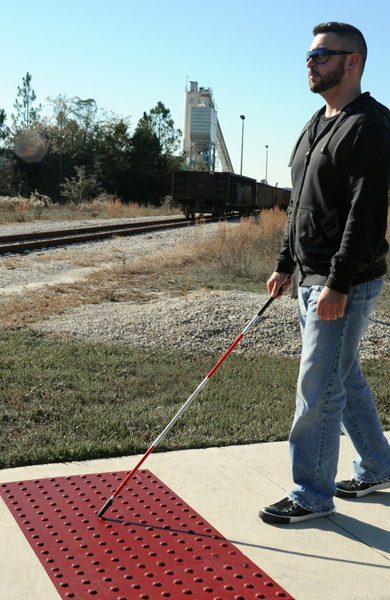ADA Regulations: Detectible Warning Tiles
 Below is 2016 detailed information from ADA.gov, including Rules and regulations for detectable warning tiles. Please note: This information was current as of 7/7/2016 from https://www.ada.gov/reg3a.html#Anchor-13283 and we bear no responsibility for its accuracy or current application. Please contact your local government agency for the most current ADA Detectable Warning regulations.
Below is 2016 detailed information from ADA.gov, including Rules and regulations for detectable warning tiles. Please note: This information was current as of 7/7/2016 from https://www.ada.gov/reg3a.html#Anchor-13283 and we bear no responsibility for its accuracy or current application. Please contact your local government agency for the most current ADA Detectable Warning regulations.
4.29 Detectable Warnings.
4.29.1 General. Detectable warnings required by 4.1 and 4.7 shall comply with 4.29.
4.29.2* Detectable Warnings on Walking Surfaces. Detectable warnings shall consist of raised truncated domes with a diameter of nominal 0.9 in (23 mm), a height of nominal 0.2 in (5 mm) and a center-to-center spacing of nominal 2.35 in (60 mm) and shall contrast visually with adjoining surfaces, either light-on-dark, or dark-on-light.
The material used to provide contrast shall be an integral part of the walking surface. Detectable warnings used on interior surfaces shall differ from adjoining walking surfaces in resiliency or sound-on-cane contact.
4.29.3 Detectable Warnings on Doors To Hazardous Areas. (Reserved).
4.29.4 Detectable Warnings at Stairs. (Reserved).
4.29.5 Detectable Warnings at Hazardous Vehicular Areas. If a walk crosses or adjoins a vehicular way, and the walking surfaces are not separated by curbs, railings, or other elements between the pedestrian areas and vehicular areas, the boundary between the areas shall be defined by a continuous detectable warning which is 36 in (915 mm) wide, complying with 4.29.2.
4.29.6 Detectable Warnings at Reflecting Pools. The edges of reflecting pools shall be protected by railings, walls, curbs, or detectable warnings complying with 4.29.2.
Visit https://www.ada.gov/reg3a.html#Anchor-13283 for more information.
